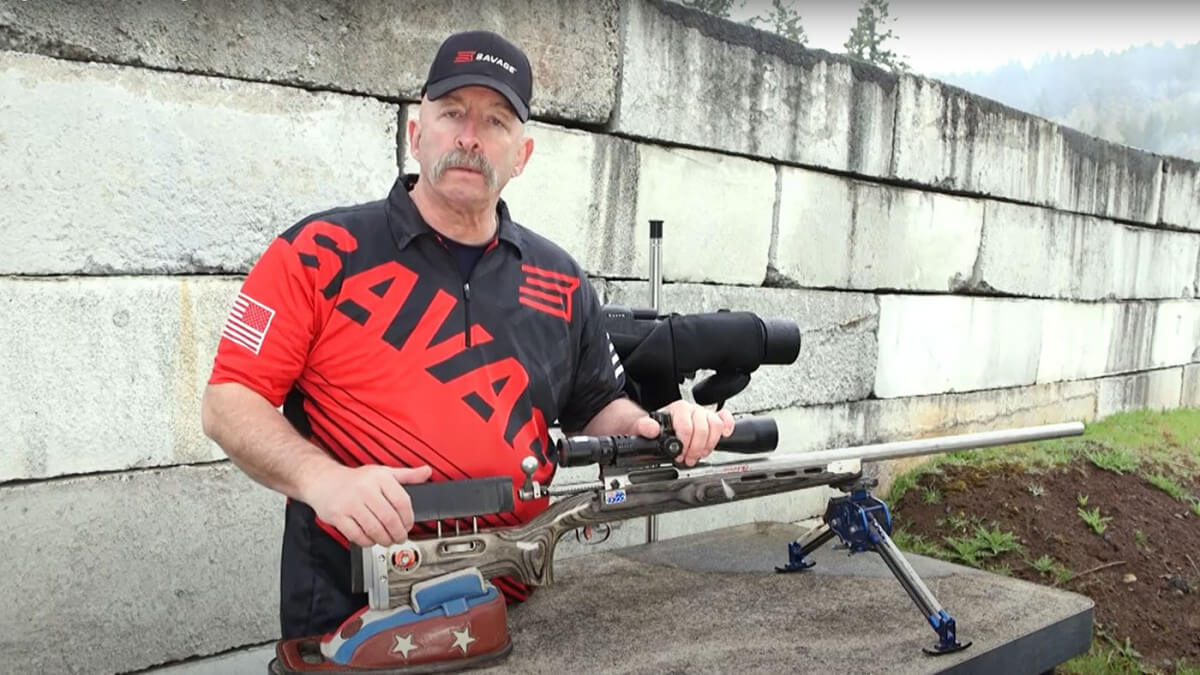- Savage Blog
- Advanced Optics for Long Range Shooting
Advanced Optics for Long Range Shooting

Modern optics do amazing things, allowing shooters to connect with targets at longer distances and in tougher conditions than ever before. But that's only if you do your part and arm yourself with a better understanding of how they function and what they can really show you. Professional shooter Stan Pate identifies light refraction mirage, a basic understanding of first- and second-focal plane optics, and choosing the right scope base as three key places where shooters can improve their long range shooting.
Refraction Remedy
Reading wind gets a lot of ink these days among long-range shooters, but Pate says you don't hear so much about how light refraction plays into that. But it can wreak havoc on your ability to connect with a target at extreme long range.
"This happens when you combine moisture with the mirage," he says. "It's bending of light - like looking at a fish underwater. Where you see the fish is not really where it is." The same thing happens with a target - especially those at extreme ranges.
"You'll get the appearance of the target moving around. What you have to do is dial the scope power setting down until the target quits moving" he says. Failure to do this will result in wild shots off target because even if your crosshairs appeared to be on the correct spot on the target when you broke the shot, the target was simply not there.
"I set up my spotting scope so it's focused at about 300 yards out and my rifle scope is focused on the target, which might be at 1,000 yards," Pate says. He sets up his spotting scope so it's aligned with his left eye, and his right eye looking through the riflescope. "With just a glance through my left eye, I can see what the mirage is doing 300 yards out and that tells me if I need to adjust my scope to compensate."
First Vs. Second Focal Plane
There are two basic types of scopes: first focal plane and second. In a first-focal plane optic, as you increase or decrease the power, the reticle size changes accordingly. This lets you use stadia lines for range-finding or holdovers.
In second-focal plane optics the opposite is true - the reticle's size is constant, regardless of the power setting. This means the stadia lines in the reticle can only be used for ranging or holdovers at a single power setting. Despite this, one big advantage of second-focal-plane optics is light transmission. "With one less lens in it, you get more light coming to your pupil through the scope," Pate says.
Choosing the Right Rail
Pate explains that one of the biggest challenges of long range shooting is having enough travel in your scope. You may only be able to adjust for 40 minutes of elevation in your scope. You may need 30 minutes of elevation at 1,000 yards, but if your scope is centered, you only have 20 minutes of elevation available.
One way to get more elevation to use a 10, 20, or 30 MOA rail to mount your scope. "What this does is it tilts your scope forward -- down, allowing you more use of the travel in your scope," says Pate. The advantage of using a mount like this comes into play at long distances. The additional minutes on your scope base will allow you to use more of the travel in your scope.


